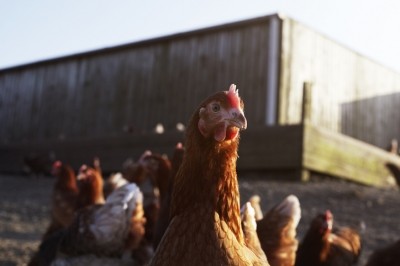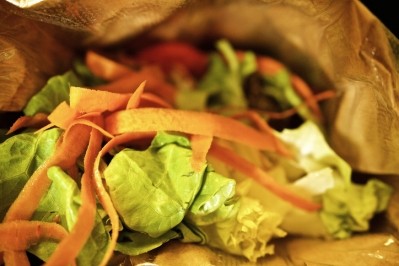‘The opportunity for game-changing innovations might be missed’: Time and Temperature Indicator tech could fight food waste but is EU regulation holding it back?

In 2020, around 127kg of food waste per person was generated in the EU, according to figures from Eurostat. Of this 55% - or 70kg per person – was wasted in our homes.
This is a ‘fundamental problem’ according to labelling innovator Keep-It’s CEO Kristen Hovland. “We are throwing away large amounts of edible food,” he observed. “The challenge we see is that current use of static date marketing are not sufficient in informing consumers about whether or not the food is still safe for consumption as it does not account for low and high temperatures during the live of a product from production to consumption.”
It would appear that the European Commission broadly agrees with this assessment. Back in 2018, the EC released a study examining the relationship between date labels and food waste. The study found that about 10% of the 88 million tons of food waste generated in the bloc annually can be linked to date markings.
In line with current EU regulation, packaged food in the region generally carries 'use by' dates to indicate a safety threshold or 'best before' dates that are used to communicate when product quality is likely to be diminished. Hovland suggests that this approach is not fit for purpose. The Norwegian food tech innovator believes that Time and Temperature Indicator (TTI) technology offers an alternative solution that ‘enables accurate tracking of food quality and shelf-life condition’ by registering temperature exposure at each part of the product lifecycle, from production to consumption. “By closing the loopholes in the traditional ‘date stamp’ method, this ground-breaking solution avoids unnecessary wastage of food that is still safe for consumption,” Hovland told FoodNavigator.
The science behind TTI tech
Keep-It has developed date labels that deliver just this. How do they work?
“The Keep-it indicator comprises a sandwich structure (15mm x 48mm) in which time-temperature sensitive ingredients (no substances of concern) are wrapped in PET/PE-laminates and a solvent-free and plasticizer free acrylic adhesive in compliance with applicable EU regulations. Once applied to a food product, the indicator monitors the product’s temperature exposure over time, and show the actual temperature dependent shelf life of the product. The mechanism of the indicator is based on a temperature dependent food grade reactant reaction (or diffusion) and is sensitive to temperature changes as it moves faster at higher temperatures and slower at lower temperatures. The speed of the reactants in the indicator mimics the shelf-life profile (degradation speed) of the specific product. Each indicator is tailor made and developed for each specific product based on shelf-life studies, e.g. microbial tests. The indicator is activated and attached to the food package during production in the facility of the food manufacturer,” Hovland explained.
According to the chief executive, this technology has the advantage of being more dynamic and showing, in real time, whether a product remains safe for consumption. Similar technologies, we were told, do not currently exist on the European market with the exception of Norway where the tech has received approval from the national food authorities and some retailers have adopted it on a voluntary basis.
“TTIs can be used for various product categories, the most common application being perishable food products like fish or meat - a segment responsible for significant GHG emissions. For the latter, retailers have reported food waste reduction of up to 59%. Pilot studies already conducted in Germany have also reported significant benefits from implementing TTIs on frozen salmon and poultry products.”
Cutting the financial, social and environmental cost of food waste
Food waste is a significant contributor to carbon emissions. If it was a country, it would be the third largest emitter in the world, behind only the USA and China. The FAO has placed the environmental cost of food waste at US$700bn per year, a figure that was calculated by quantifying carbon, land, and water costs and potential savings.
Food waste also represents a significant economic cost. A significant amount of money is literally thrown away each year when we produce food that is never eaten. Factoring in the wasted labour, resources and energy that go into food that is discarded, it is almost impossible to estimate the financial benefits that would result from food waste reduction. However, looking at resource costs, the FAO recently suggested annual losses linked to food waste total US$1trn globally.
And, in a world where 828 million people go to bed hungry each night, the ethical responsibility to tackle food waste is hard to ignore.
Hovland believes TTI should be part of the solution. “The technology can contribute to achieving sustainability benefits, be it social, economic and environmental. Reducing food waste in the EU will require measures and actions at different levels, but TTIs can contribute to the EU’s efforts to curb food waste,” he stressed.
“First, the land, water, energy and other scarce natural resources it takes to grow, collect, carry and wrap up the product are also squandered when food is wasted. In addition, food items end up going to landfill and rot, which leads to food waste alone accounting for about 6% of total EU emissions, so reductions are essential if the EU is to meet its climate neutrality objective. We therefore hope TTIs to help actors in the food supply chain to better manage resources, and avoid unnecessary GHG emissions from food waste.”
While TTI tech could be an effective tool to help consumers reduce their own food waste at home, Hovland explained it is actually a tool that can deliver savings across different links in the supply chain. He explained that TTI technologies ‘have proven highly effective’ in improving the overall efficiency of food supply operations by expanding retailers’ understanding and management of their cold chains. “Retailers are conscious about the role they have to play, knowing that consumer behaviour is motivated by cultural, personal and psychological factors and cannot be changed quickly. Then, because this could prove particularly decisive in the current energy context, where power cuts could become more frequent. The use of TTIs leads to improved storage practices and more resilient and sustainable supply chains. The development of TTI technologies in the European market could also lead to significant economic benefits including job creation. It would then have a positive impact on economic growth and achieving a circular economy.
“These benefits not only include moving towards sustainable food systems and consumer confidence but also increased food availability and affordability to the most vulnerable. With food prices increasing, consumers will consider better food management behaviours at home. So, we believe the impact would be also beneficial for EU citizen. TTIs have already proven to be improving consumers’ confidence by providing real-time indications on the product’s safety. The indicator itself is also completely harmless, as per the materials mentioned above.”
The need to update EU regulation
In order to combat food waste, the EC announced in May 2020 a possible revision to the rules governing date marketing as part of the Farm to Fork strategy.
For Hovland, changes cannot come soon enough. “The opportunity for game-changing innovations related to TTI technologies might be missed if it is not recognised in time by a European regulatory framework,” he told this publication. “The Food Information to Consumers (FIC) regulation is one of the major factors hindering market growth by not allowing a TTI to be used as an alternative to static date marking. The current revision of the regulation therefore provides a timely opportunity to license TTI solutions (under Article 24) as an alternative to the current date marking system and bring in an effective harmonized measure to better inform consumers and reduce food waste and its impact on the environment.”
Hovland explained that, while TTI has received ‘positive feedback’ from the food safety authorities in Member States like the Netherlands and Germany, further expansion in Norway and EU Member States has been ‘difficult’ because retailers want TTIs to offer an alternative to date stamping rather than an addition to it. “Political support regarding the legal relief for the use of such technology is indeed considered as a key factor of success for the development of TTIs,” he stressed.
Food lawyer Katia Merten-Lentz, Founder and Partner at Food Law Science & Partners, suggested that a revision of date labelling rules is 'politically desirable' in Brussels. "It seems politically desirable to revise the current rules, at least to improve consumer understanding of date labelling such as 'use by' as an indicator of safety and 'best before' as an indicator of quality," she told us. "More and more companies have developed new systems to check, for instance, the freshness of food. It would be a shame that these innovative date marking tools, which will undoubtedly help tackle food waste, are slowed by too restrictive rules."
What changes would labelling innovators like Keep-It like to see adopted? Hovland responded: “TTIs to be granted market access on equal terms and allowed as an alternative to static date marking in the ongoing review of the FIC regulation, under the current Article 24, or as complementary to a different date marking which would work well together with a TTI.
“A change in approach at political level would benefit the innovation landscape, as it would unlock the potential of technologies like TTIs to be developed, commercialised and used at a larger scale. First because it could be applied to a broader range of products, but also because a favourable regulatory framework would pave the way for other governments around the world to unlock the benefits the technology could bring in their effort to combat food waste. In this context, the technological solution described here, or equivalent ones currently offered by several innovators, can create a competitive niche market in this sector as well as for other sectors such as pharmaceuticals.”
To this end, Keep-It has met with stakeholders from the Commission, including the Directorate General for Health and Food Safety in charge of issues related to food labelling. Hovland believes there is a ‘window of opportunity’ as the Commission works to finalise the FIC revision proposal. “They have been keen to have an open and constructive discussions on the issue, and we hope they could deliver a proposal that would help consumers receive the most accurate information on the food products they buy."

































